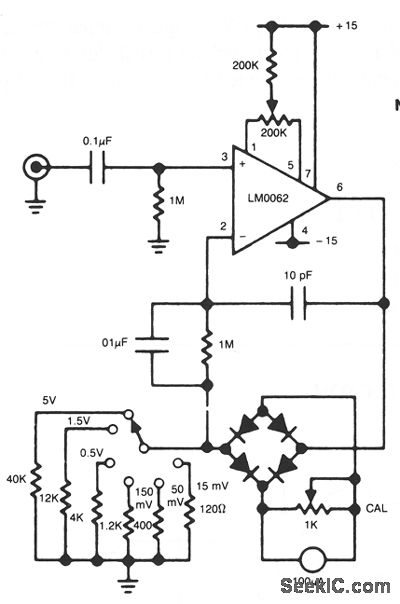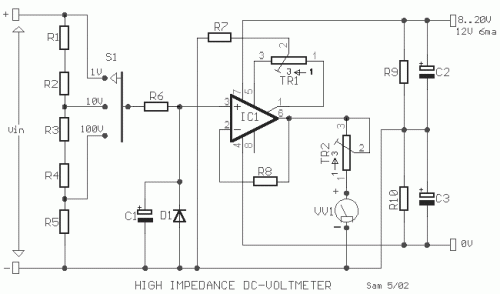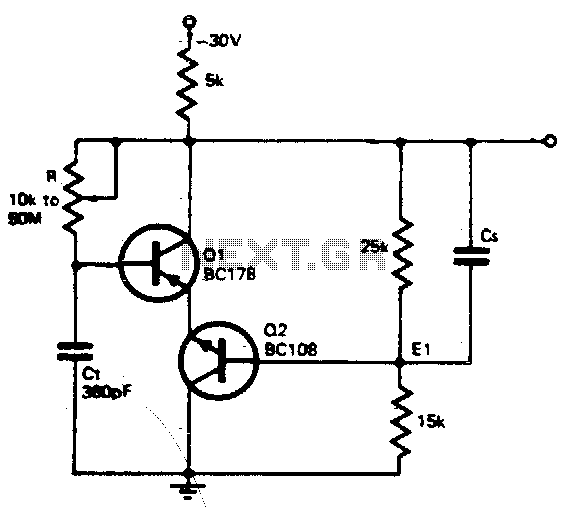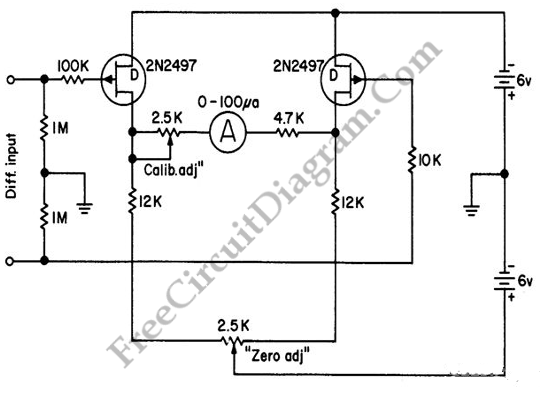
WIDE RANGE AC VOLTMETER

This circuit utilizes a diode bridge as a meter rectifier. The offset voltage is compensated by an operational amplifier, as the bridge is integrated within the feedback network.
The circuit employs a diode bridge rectifier, which consists of four diodes arranged in a specific configuration to convert alternating current (AC) to direct current (DC). This configuration allows for efficient rectification, providing a unidirectional output voltage regardless of the polarity of the input AC signal.
In this setup, the operational amplifier (op-amp) plays a critical role in maintaining the accuracy of the output voltage. It is connected in a feedback loop that includes the diode bridge, allowing it to sense and compensate for any offset voltage that may arise due to the characteristics of the diodes or the circuit itself. The op-amp adjusts its output to ensure that the rectified voltage remains stable and within the desired range, thereby enhancing the overall performance of the circuit.
The feedback network is essential for achieving high precision in applications where the output voltage must closely match a specified reference value. The combination of the diode bridge and the op-amp allows for effective filtering and regulation of the rectified voltage, making this circuit suitable for various electronic applications, including power supplies, signal conditioning, and measurement systems.
Overall, the integration of a diode bridge with an operational amplifier in a feedback configuration is a robust solution for rectifying AC signals while compensating for any inherent offset voltages, ensuring reliable and accurate performance in electronic circuits.In this circuit, a diode bridge is used as a meter rectifier. The offset voltage is compensated for by the op amp, since the bridge is in the feedback network. 🔗 External reference
The circuit employs a diode bridge rectifier, which consists of four diodes arranged in a specific configuration to convert alternating current (AC) to direct current (DC). This configuration allows for efficient rectification, providing a unidirectional output voltage regardless of the polarity of the input AC signal.
In this setup, the operational amplifier (op-amp) plays a critical role in maintaining the accuracy of the output voltage. It is connected in a feedback loop that includes the diode bridge, allowing it to sense and compensate for any offset voltage that may arise due to the characteristics of the diodes or the circuit itself. The op-amp adjusts its output to ensure that the rectified voltage remains stable and within the desired range, thereby enhancing the overall performance of the circuit.
The feedback network is essential for achieving high precision in applications where the output voltage must closely match a specified reference value. The combination of the diode bridge and the op-amp allows for effective filtering and regulation of the rectified voltage, making this circuit suitable for various electronic applications, including power supplies, signal conditioning, and measurement systems.
Overall, the integration of a diode bridge with an operational amplifier in a feedback configuration is a robust solution for rectifying AC signals while compensating for any inherent offset voltages, ensuring reliable and accurate performance in electronic circuits.In this circuit, a diode bridge is used as a meter rectifier. The offset voltage is compensated for by the op amp, since the bridge is in the feedback network. 🔗 External reference





